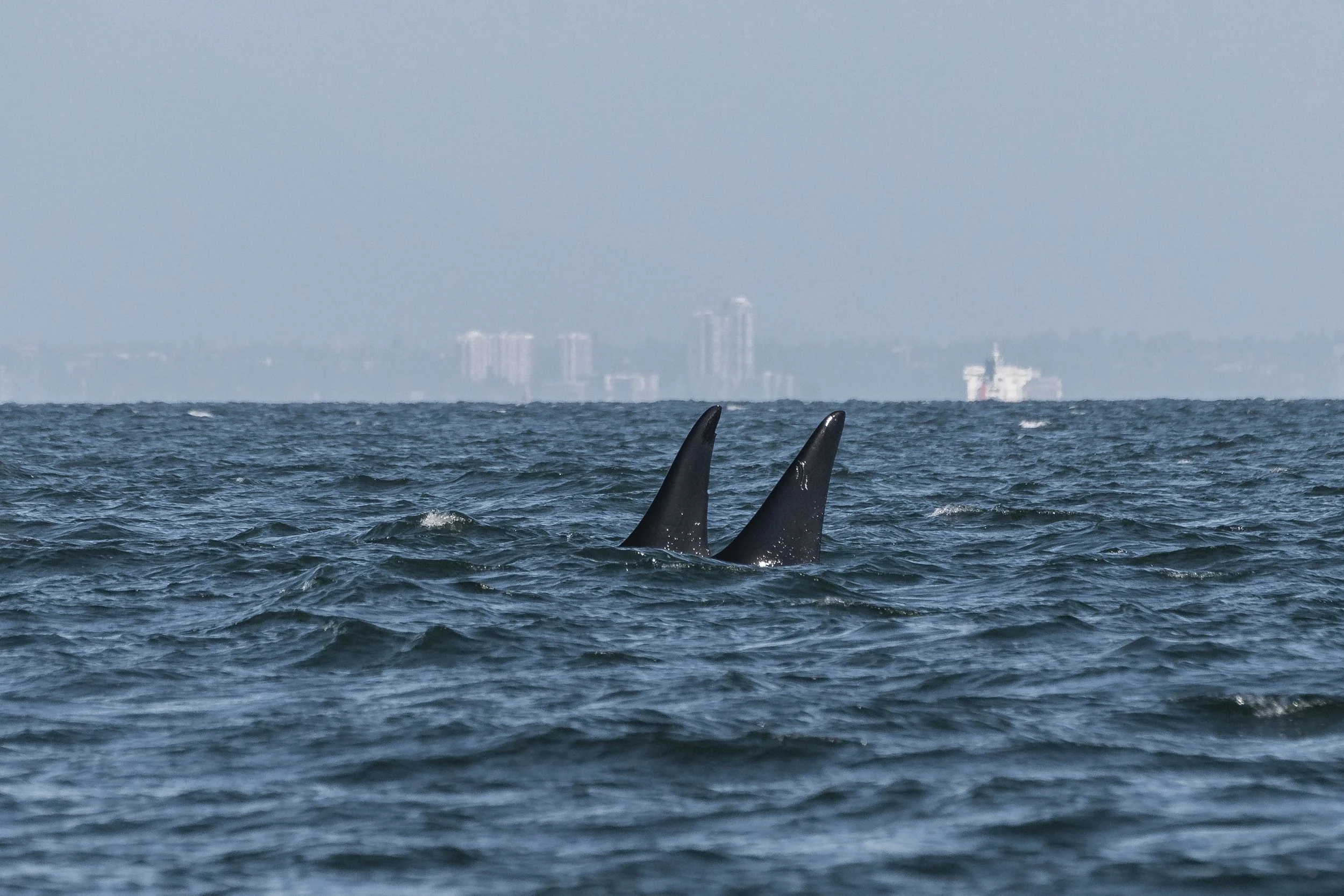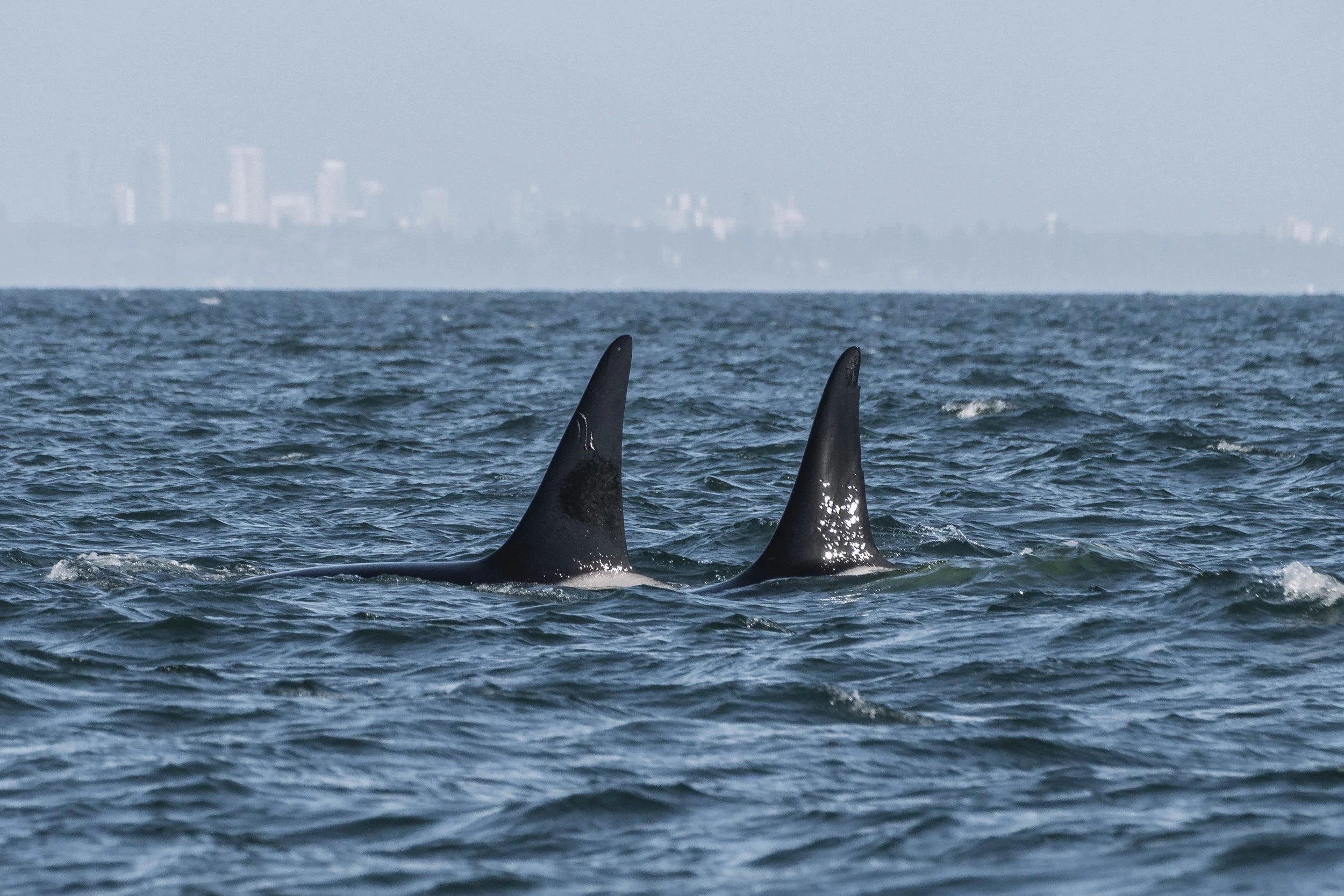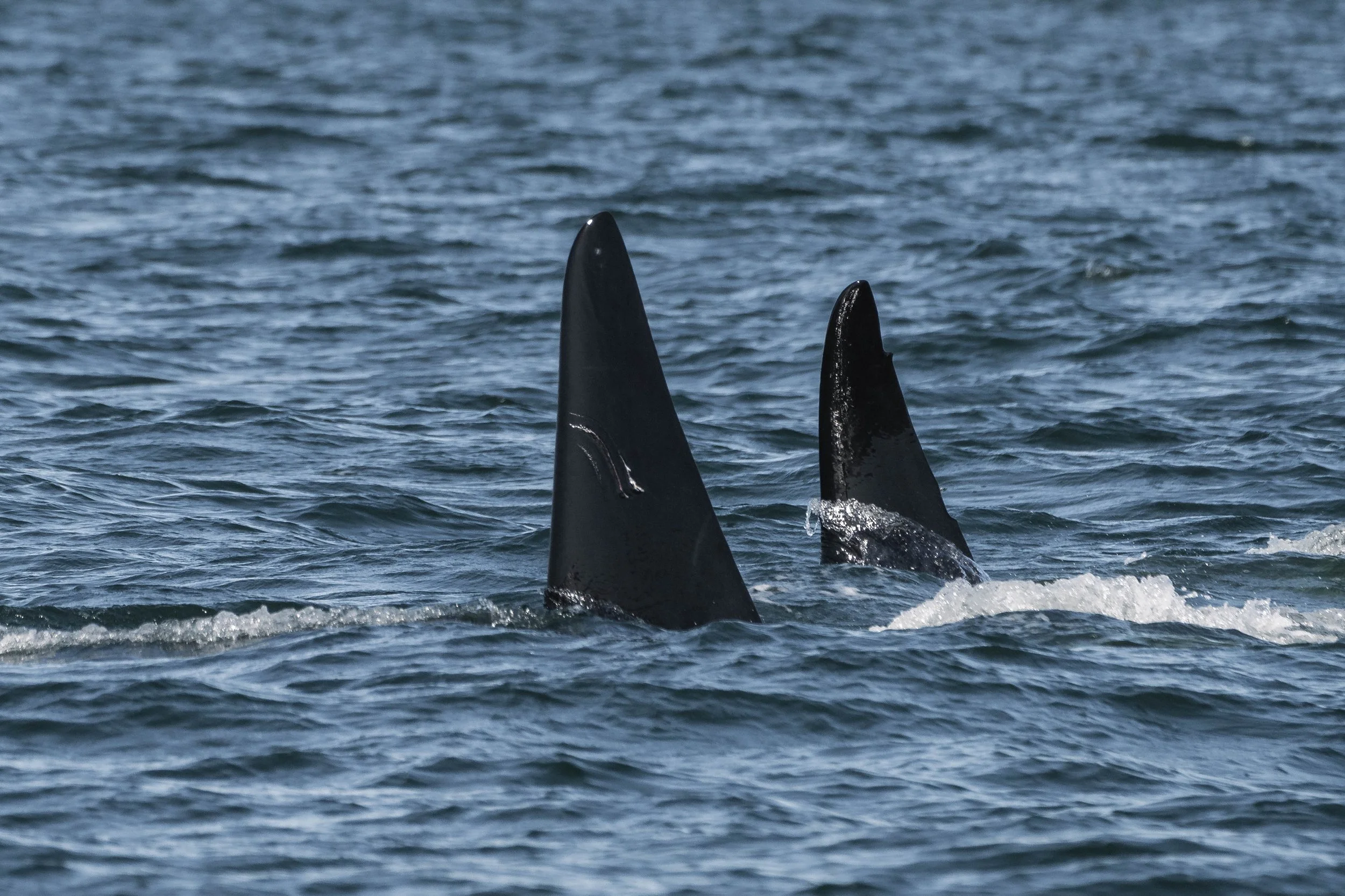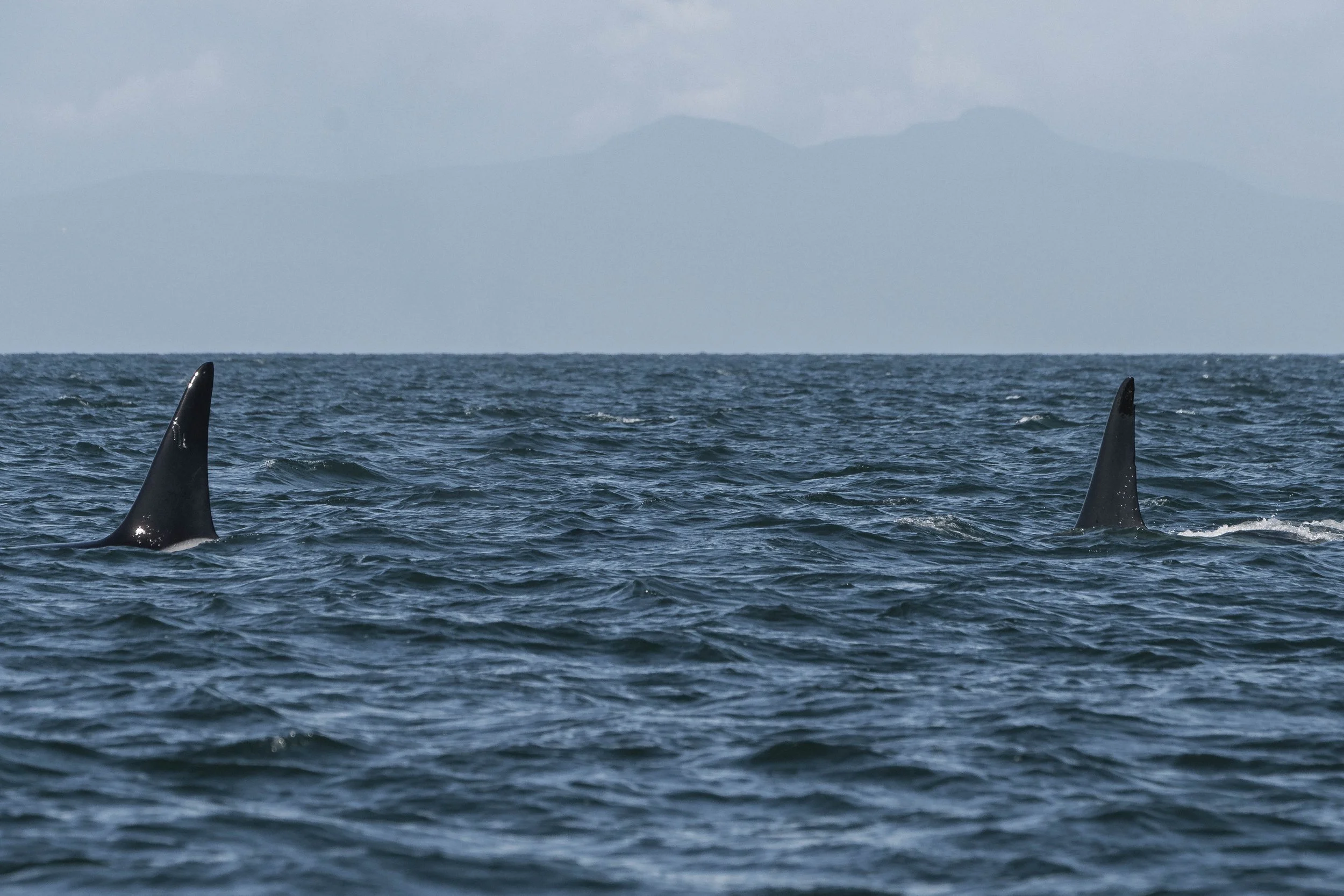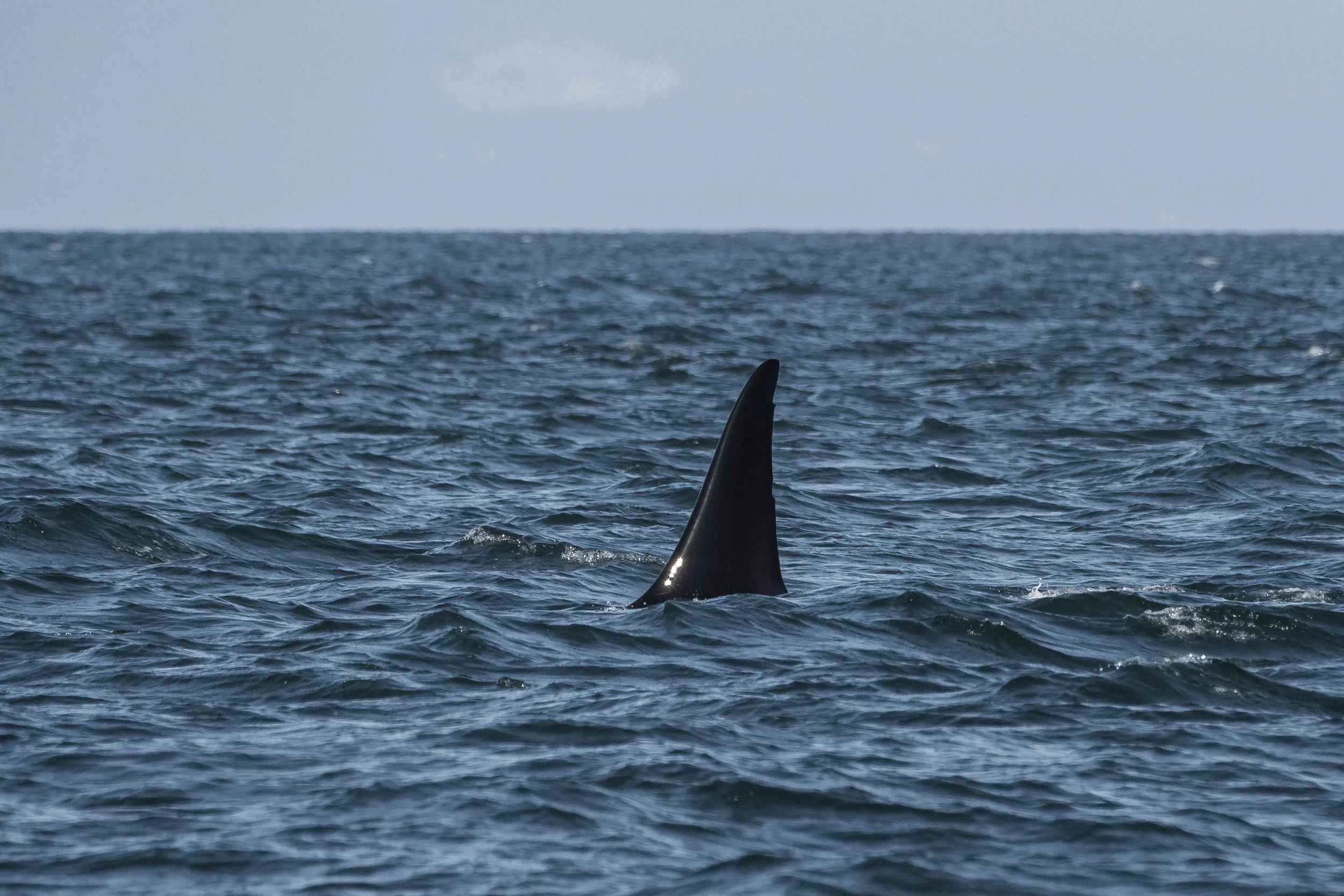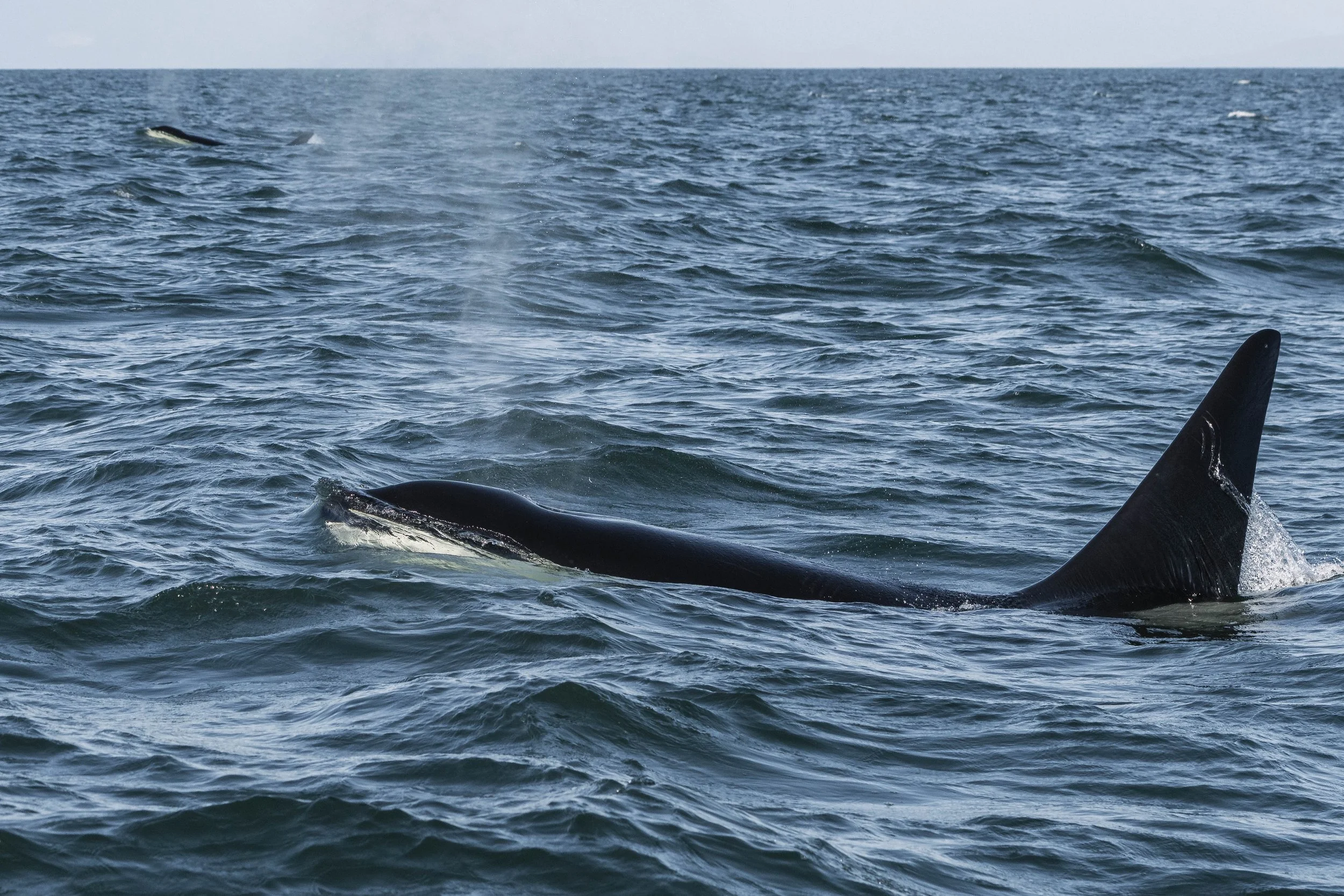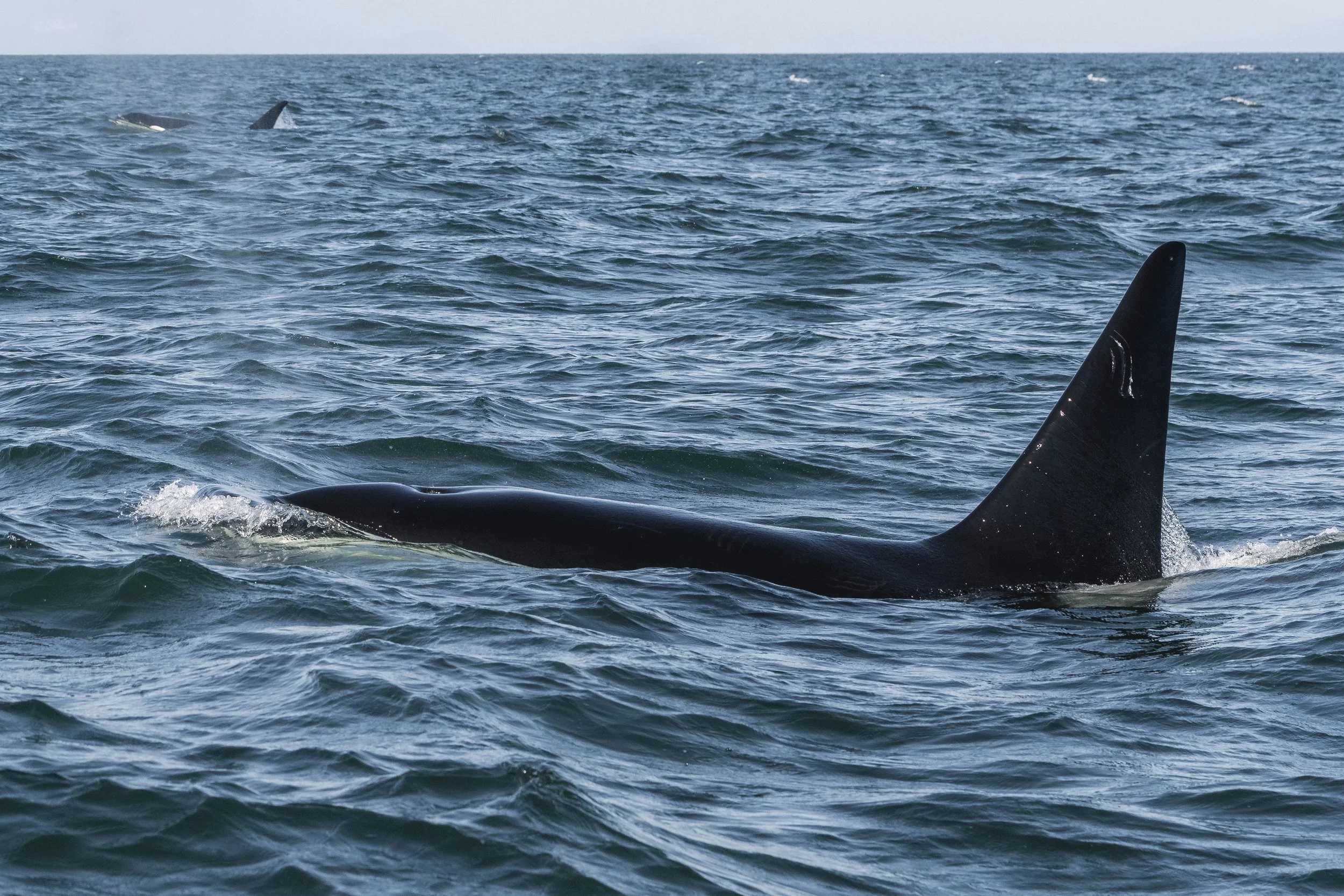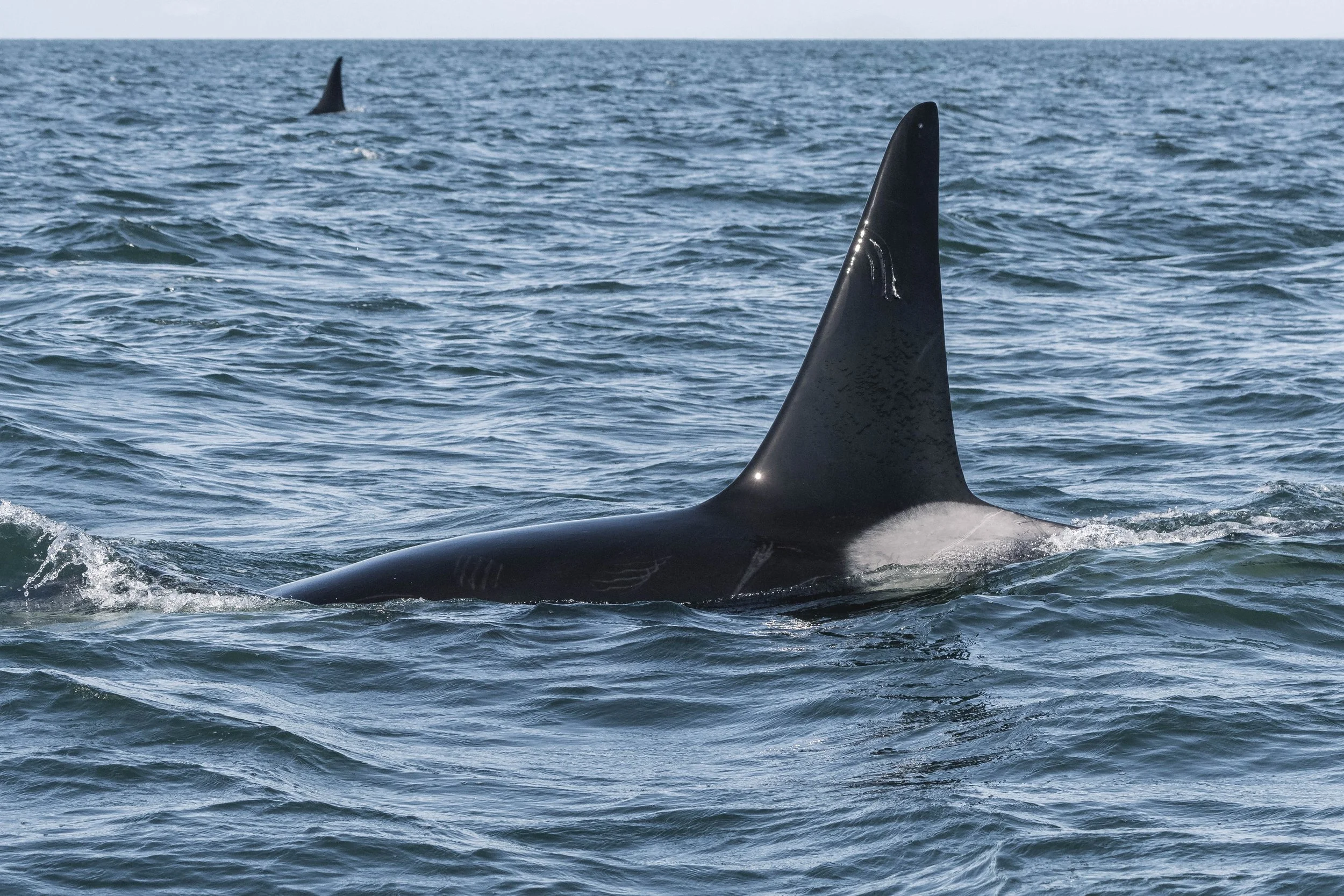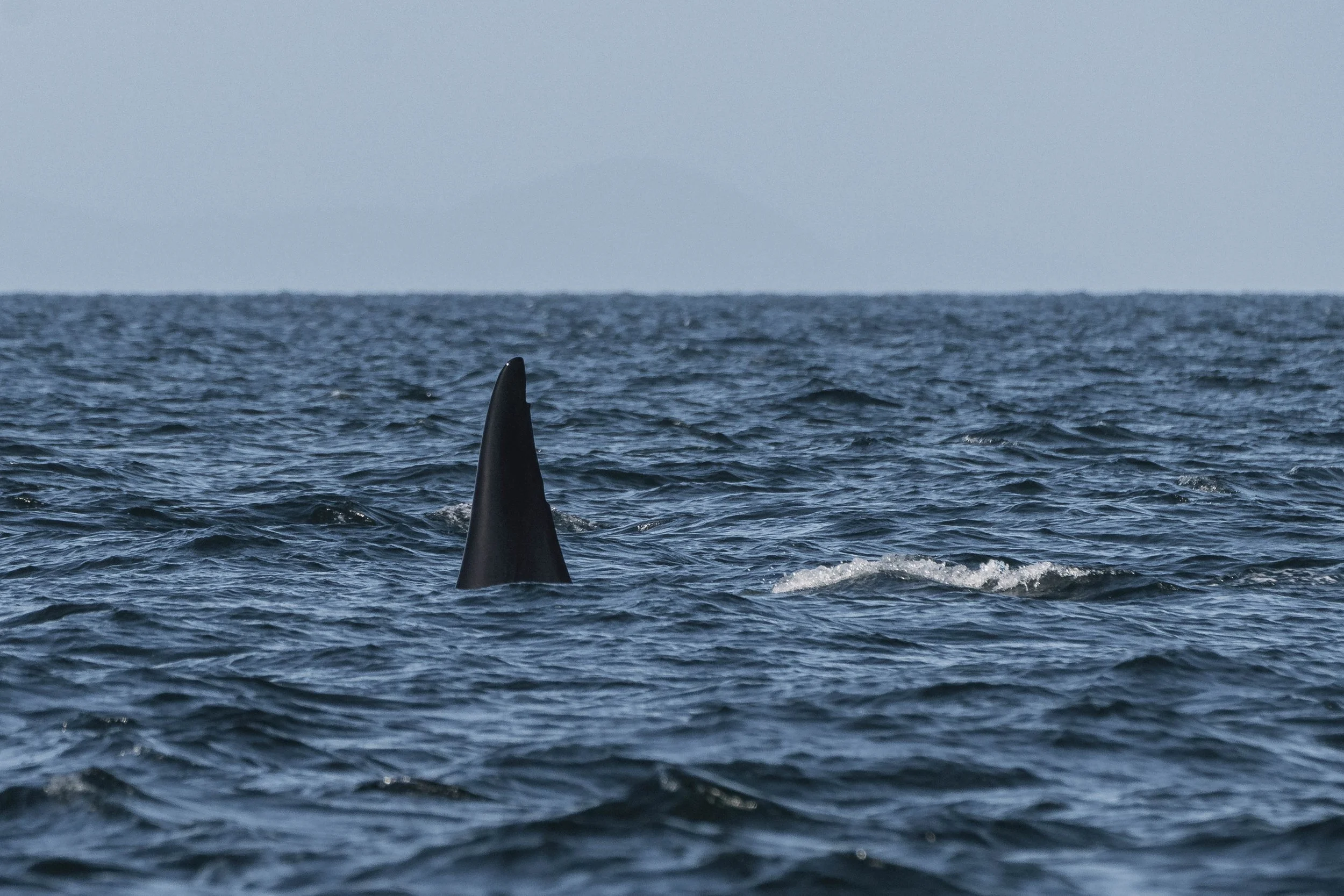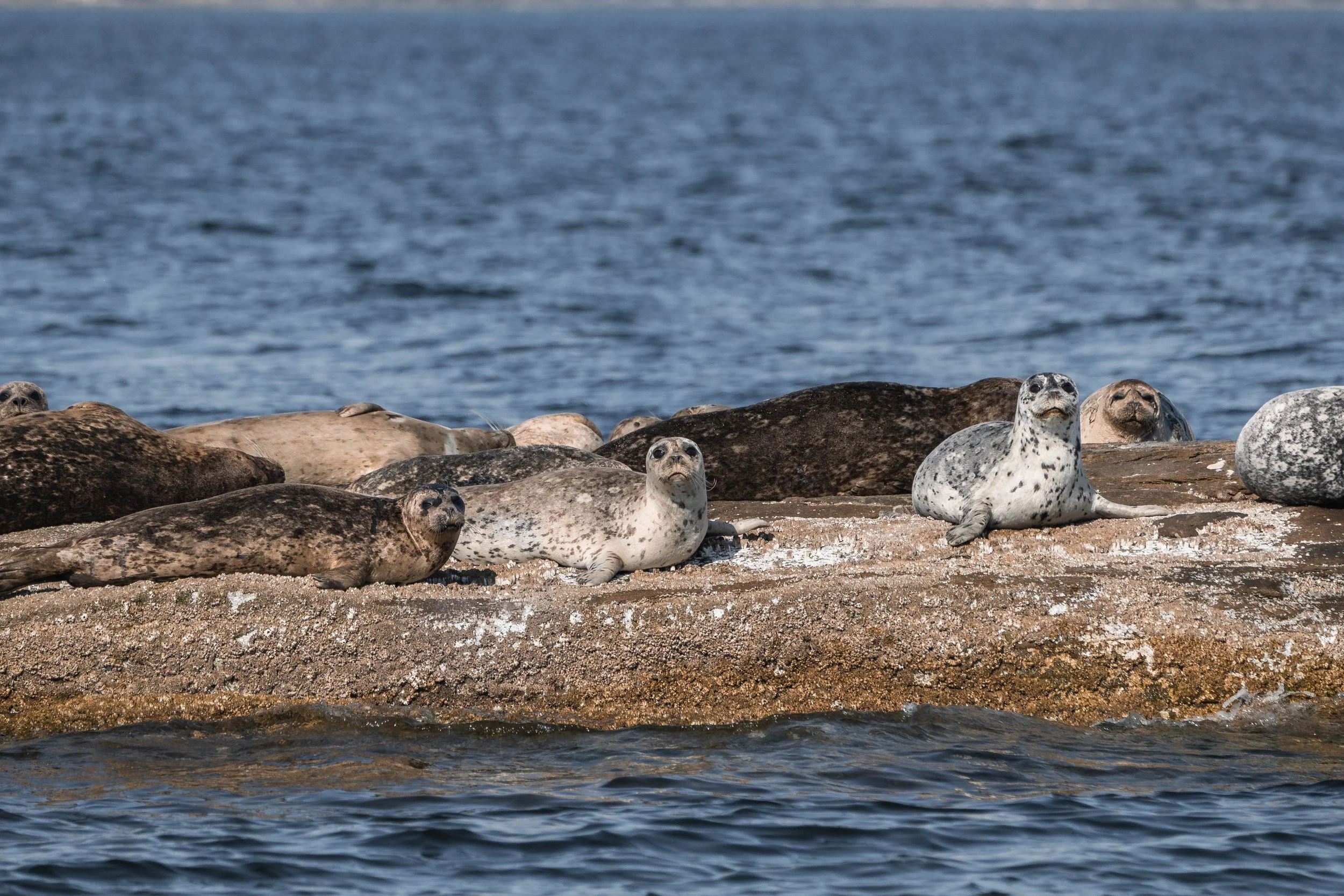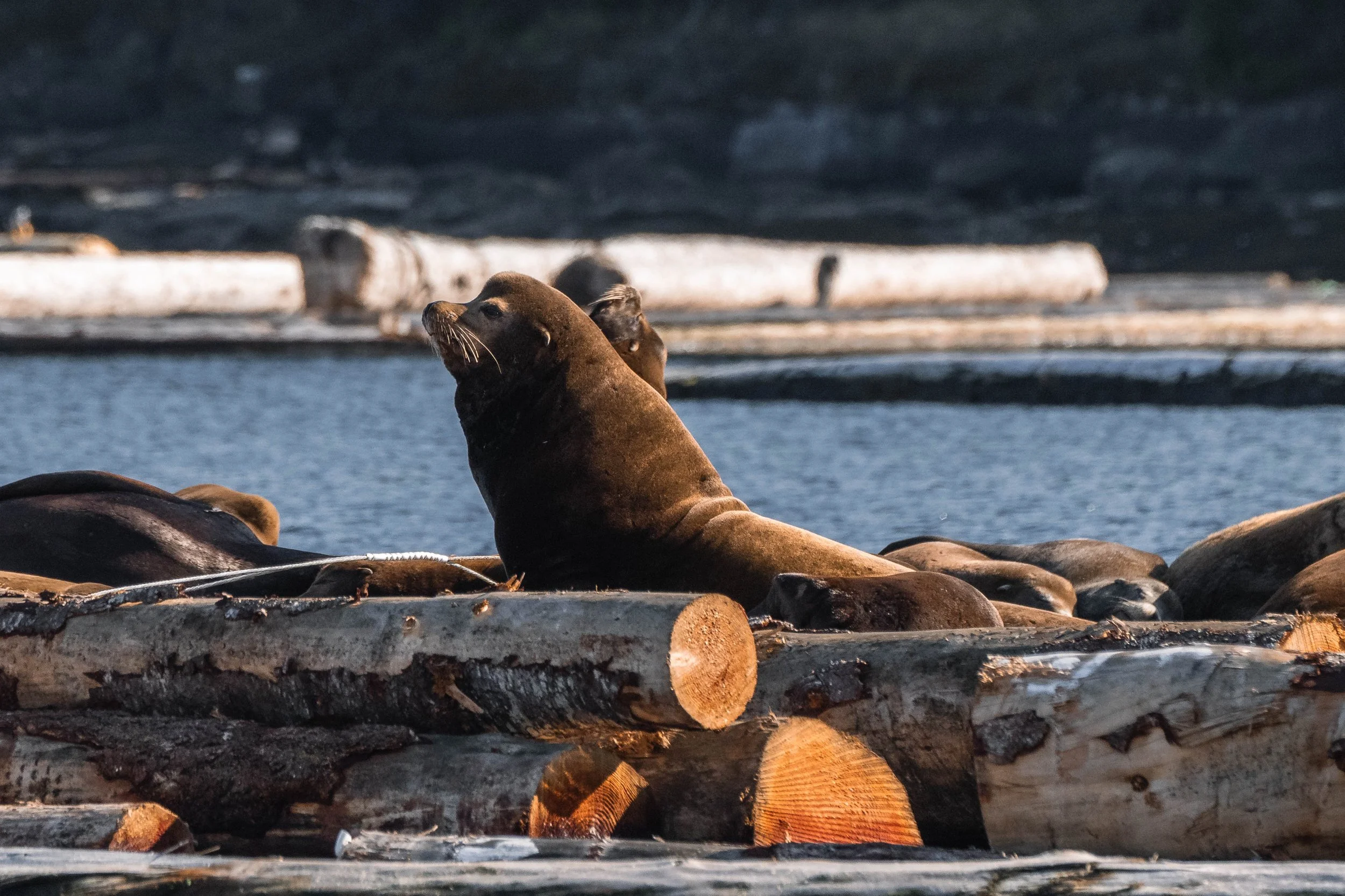September 22, 2025, 12:00 PM - The T060 Brothers off of Galiano Island
As we departed Nanaimo, we decided to start our adventure by exploring the intricate waterways of the Southern Gulf Islands. The Salish Sea is a maze of over 200 islands and islets, with their steep, forested shorelines reflected in glassy water. We followed the familiar route south through Stuart Channel, then into Trincomali Channel, the gentle hum of the engines carrying us deeper into this remarkable marine ecosystem.
By the time we reached Active Pass, the water was moving swiftly. This narrow, winding channel between Galiano and Mayne Islands is one of the most dynamic passages in the region. Strong tidal currents rush through with every exchange, funnelling vast amounts of nutrient-rich water, and with it, an abundance of marine life. It’s also a vital corridor for commercial vessels, ferries, and wildlife alike. Emerging from Active Pass into the open Strait of Georgia, we were eager to see what the day had in store. Reports earlier in the morning mentioned orca nearby, and hope was high.
Just as the crew was about to call off the search, a familiar silhouette broke the surface: two tall, black dorsal fins cutting through the waves. We had found our whales: the T060 brothers.
T060D Onca ♂ (2004)
T060E Lynx ♂ (2008)
The T060 family is a well-known matriline of Bigg’s (Transient) Orca, a population of mammal-eating killer whales found throughout the coastal waters of British Columbia. While most orca stay closely bound to their mothers for life, these two adult males have been travelling independently for several years.
Since the birth of their younger sibling in 2019, the brothers have been observed exploring and hunting together outside their maternal pod. The reasons for this type of behaviour aren’t fully understood, but several factors could be at play. As the pod grows, competition for food increases, which may encourage mature offspring to strike out on their own. Social dynamics also evolve: younger calves demand more attention from mothers, and older siblings may naturally become more independent as they mature.
Whatever the motivation, the T060 brothers appear to be thriving. When we first encountered them, they were actively hunting, a display of coordination and precision that highlights why Bigg’s orca are such successful predators.
Bigg’s orca are the apex predators of the Salish Sea, preying primarily on marine mammals such as harbour seals, sea lions, and porpoises. Their diet sets them apart from the fish-eating Resident Orca, and this difference extends beyond food choice: it defines their social structure, range, and even communication. Bigg’s orca hunt silently to avoid alerting prey that rely on sound underwater, whereas Resident orca vocalize frequently to coordinate while chasing fish.
The harbour seal makes up the majority of a Bigg’s orca’s diet, accounting for over 80% of documented kills in some regions. Despite being smaller and relatively abundant, seals are cunning prey, often diving into complex coastal environments or kelp beds for cover. Watching the brothers hunt reminded us of the delicate balance between predator and prey, each vital to the ecosystem’s health.
After spending time with the brothers, we made our way back toward the sheltered waters of the Gulf Islands, passing through Porlier Pass. Along the way, we stopped at a small rocky islet known as Miami Islet, named after a vessel that ran aground here in the early 1900s. Today, it serves as a haul-out site for Harbour Seals.
These seals, with their round faces and curious eyes, are often seen resting on rocks or drifting in the shallows. Their awkward “galumphing” motion on land, caused by fused pelvic bones, contrasts sharply with their grace underwater, where they become agile hunters of fish and cephalopods. Though they are prey for orca, they also play an important ecological role by regulating local fish populations and serving as a link in the marine food web.
Our final stop of the day brought us to the Harmac Pulp Mill, where the booming sounds of Steller and California Sea Lions echoed across the water. These noisy pinnipeds crowded the log booms, jostling for space and barking at one another in protest, a classic west coast scene. Despite their bluster, sea lions are highly social animals, and these gatherings are essential for resting and thermoregulation.
We returned to Nanaimo feeling very lucky to have seen so many unique species as we travelled through the Salish Sea. Throughout this adventure, the Marine Naturalist onboard, Val Watson, captured some fantastic photos, all of which can be viewed below!
T060E Lynx surfacing just ahead of his brother T060D Onca.
T060D Onca in the lead, followed by T060E Lynx.
Look at this fresh injury on T060D Onca’s dorsal fin as he surfaces ahead of his brother T060E Lynx.
T060D Onca on the left, with T060E Lynx on the right.
A great look at T060E Lynx.
T060D Onca surfacing in the waves.
You can see both brothers in this photo, with T060D Onca closer, and T060E Lynx behind.
Although quite far apart, T060D Onca (front) and T060E Lynx (back) were still synconized in their surfacing.
You can really see all the scarring on T060D Onca’s body as he surfaces here with T060E Lynx behind him.
You can see T060D Onca’s eye patch through the water here.
A great look at T060D Onca as he passes the boat.
The distinctly notched dorsal fin of T060E Lynx.
Cute Harbour Seals watching us from the rocks.
A shift in movement from this Harbour Seal.
I think this Harbour Seal is pretending to be an airplane!
Long Harbour Seal is looonnggg!
A California Sea Lion on the log booms at Harmac.

